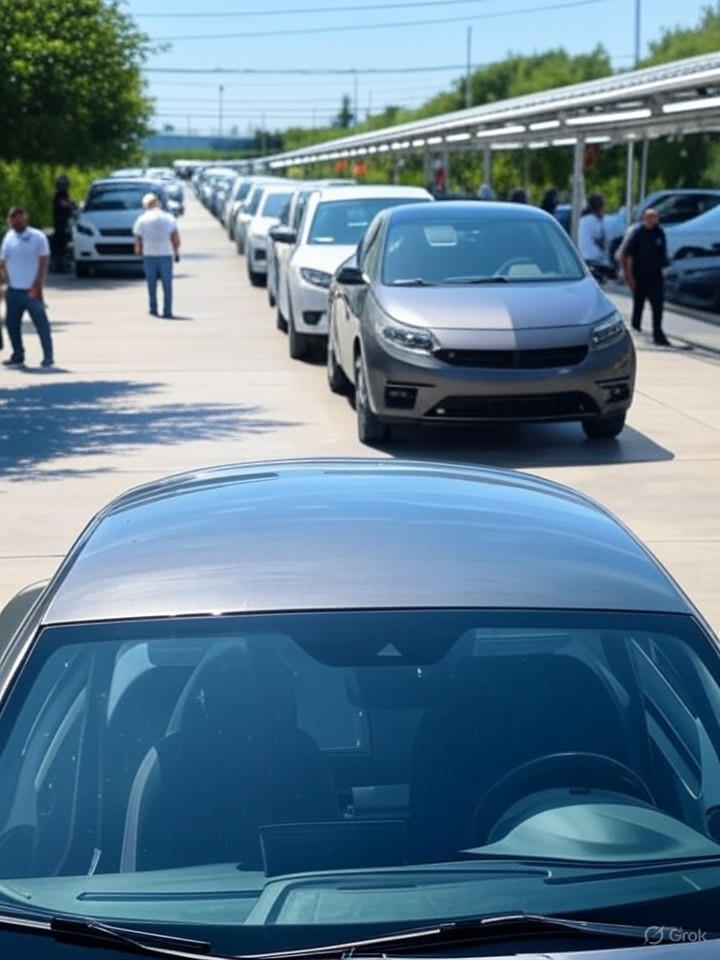In the first half of 2025, Mexico’s grip on the U.S. auto import market has only tightened, defying the headwinds of escalating tariffs and geopolitical tensions. According to recent data from the U.S. Census Bureau, Mexico accounted for 23.1% of all U.S. vehicle imports through June, up from 21.5% in the same period last year. This surge comes even as President Trump’s administration imposed a 25% tariff on Mexican-made vehicles starting in March, aimed at curbing what the White House calls unfair trade practices that threaten national security.
The resilience of Mexican exports is rooted in deep supply-chain integrations under the U.S.-Mexico-Canada Agreement (USMCA), which allows many vehicles to qualify for reduced duties if they meet regional content rules. Industry analysts note that automakers like General Motors and Volkswagen have ramped up production in facilities south of the border, leveraging lower labor costs and proximity to U.S. assembly plants. A report from Mexico News Daily highlights how Mexico’s share climbed despite these barriers, with exports hitting 1.8 million units in the first six months—a 12% year-over-year increase.
Rising Exports Amid Policy Shifts
Yet, this growth isn’t without friction. Tariffs have inflated costs for U.S. consumers, with the average price of imported vehicles from Mexico rising 8% since implementation, per data from the Council on Foreign Relations. In a February blog post, the Council on Foreign Relations warned that such measures could inadvertently boost Chinese electric vehicle makers, who face their own steep duties but might gain ground if Mexican production falters. Insiders in Detroit whisper that American firms are quietly lobbying for exemptions, fearing a ripple effect on parts suppliers.
On the ground in Mexico, the automotive sector—employing over four million workers—has felt the tremors. Exports constitute 70% of the industry’s output, directed primarily northward, as noted in an April article from Le Monde. Mexican officials, including Economy Minister Raquel Buenrostro, have pushed back, threatening retaliatory tariffs on U.S. goods like corn and steel, which could escalate into a broader trade skirmish.
Market Dynamics and Competitive Edges
Drilling deeper, Mexico’s edge lies in its evolving role as a hub for electric and hybrid vehicles. Shipments of EVs from plants in Puebla and Guanajuato surged 51% in the first half, bucking a global slowdown, according to Focus2Move. This positions Mexico ahead of rivals like Canada (18% market share) and Japan (15%), with analysts at TradingView reporting a 7.9% jump in July exports alone, driven by brands like Stellantis and Volkswagen.
Social media sentiment on X reflects investor jitters, with posts highlighting “widespread frontrunning” of tariff hikes, as users discuss potential $50 billion annual costs to the U.S. auto sector. One influential account noted that 46% of U.S. car sales rely on imports, with Mexico supplying nearly three million units yearly, amplifying the stakes.
Future Implications for Trade and Investment
Looking ahead, the tariffs’ full impact may unfold in 2026, when USMCA reviews could renegotiate terms. A White House fact sheet from March, available on whitehouse.gov, justifies the moves under Section 232, citing national security. However, Mexican industry leaders, via the Mexican Auto Industry Association, argue that investment decisions are “paralyzed,” potentially shifting capital to Asia.
For U.S. automakers, the calculus is complex: relocate production stateside at higher costs or absorb tariffs and pass them on? As one executive confided anonymously, “Mexico’s not just a supplier; it’s the backbone.” With bilateral talks slated for fall, the auto trade’s trajectory hangs in the balance, testing the limits of protectionism in an interconnected industry. Recent web searches confirm ongoing negotiations, with Mexico overtaking China as the top U.S. supplier, per The Rio Times, underscoring a resilient yet vulnerable partnership.




 WebProNews is an iEntry Publication
WebProNews is an iEntry Publication